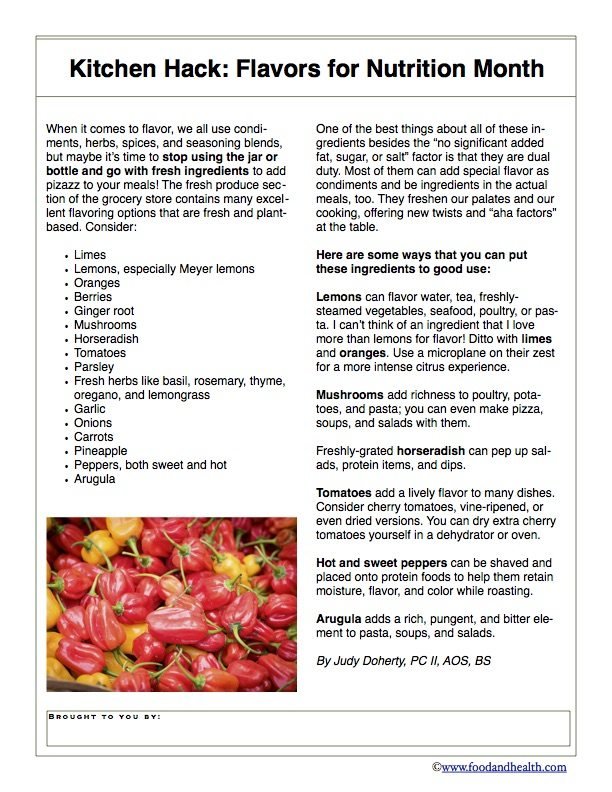Kitchen Hack: Flavors for Nutrition Month
When it comes to flavor, we all use condiments, herbs, spices, and seasoning blends, but maybe it’s time to stop using the jar or bottle and go with fresh ingredients to add pizazz to your meals! The fresh produce section of the grocery store contains many excellent flavoring options that are fresh and plant-based. Consider:
- Limes
- Lemons, especially Meyer lemons
- Oranges
- Berries
- Ginger root
- Mushrooms
- Horseradish
- Tomatoes
- Parsley
- Fresh herbs like basil, rosemary, thyme, oregano, and lemongrass
- Garlic
- Onions
- Carrots
- Pineapple
- Peppers, both sweet and hot
- Arugula
One of the best things about all of these ingredients besides the “no significant added fat, sugar, or salt” factor is that they are dual duty. Most of them can add special flavor as condiments and be ingredients in the actual meals, too. They freshen our palates and our cooking, offering new twists and “aha factors” at the table.Here are some ways that you can put these ingredients to good use:
- Lemons can flavor water, tea, freshly-steamed vegetables, seafood, poultry, or pasta. I can’t think of an ingredient that I love more than lemons for flavor! Ditto with limes and oranges. Use a microplane on their zest for a more intense citrus experience.
- Mushrooms add richness to poultry, potatoes, and pasta; you can even make pizza, soups, and salads with them.
- Freshly-grated horseradish can pep up salads, protein items, and dips.
- Tomatoes add a lively flavor to many dishes. Consider cherry tomatoes, vine-ripened, or even dried versions. You can dry extra cherry tomatoes yourself in a dehydrator or oven.
- Hot and sweet peppers can be shaved and placed onto protein foods to help them retain moisture, flavor, and color while roasting.
- Arugula adds a rich, pungent, and bitter element to pasta, soups, and salads.

